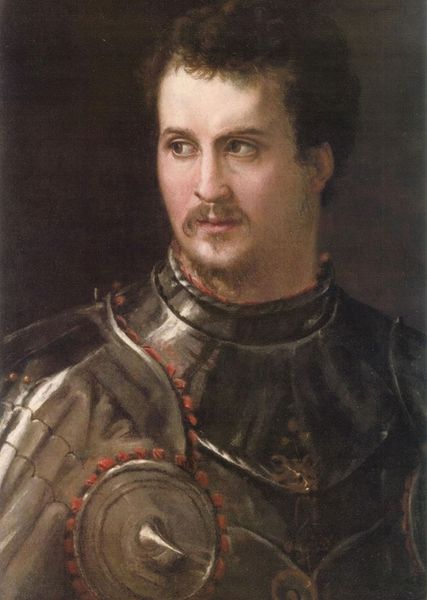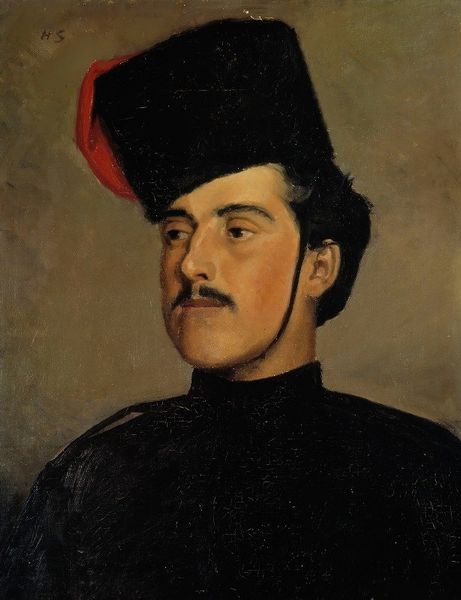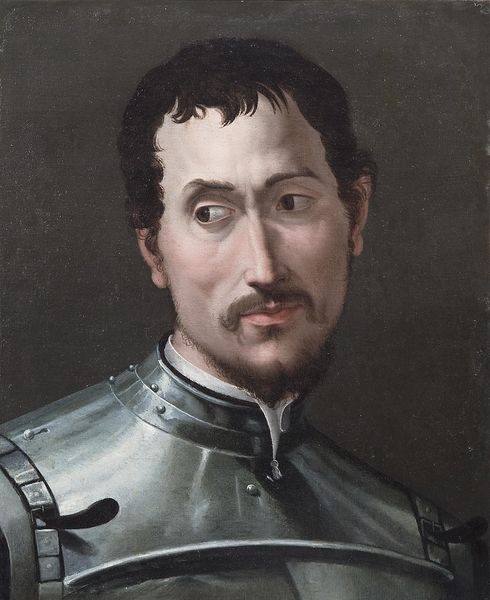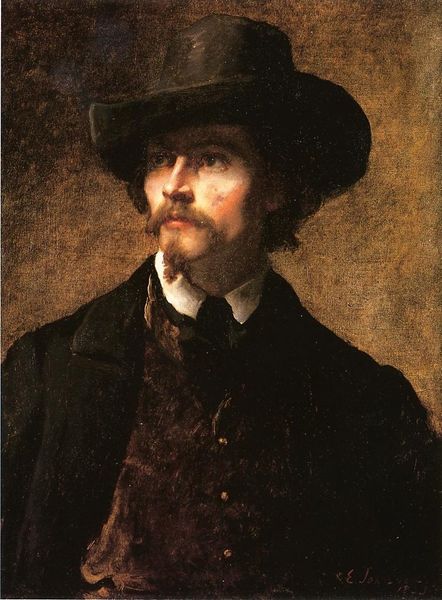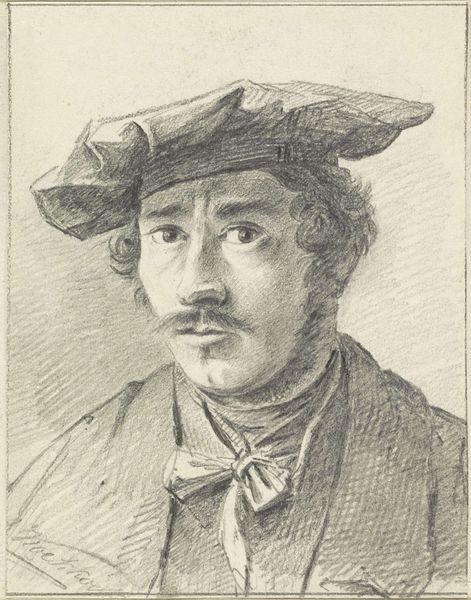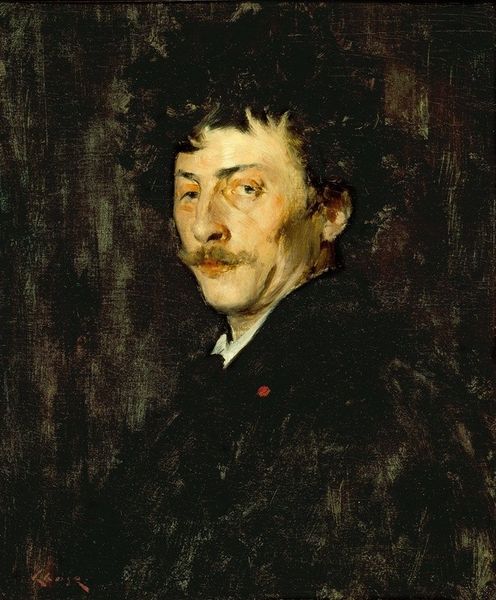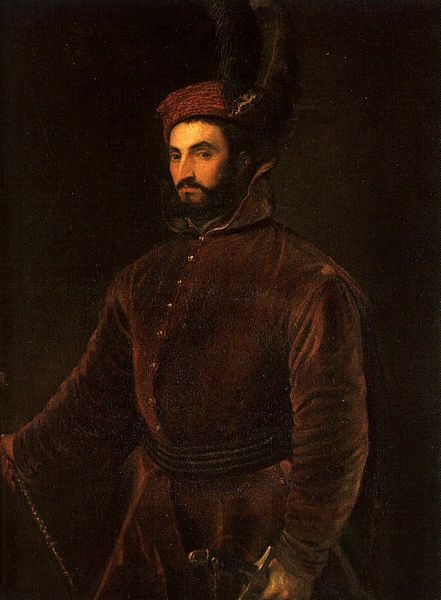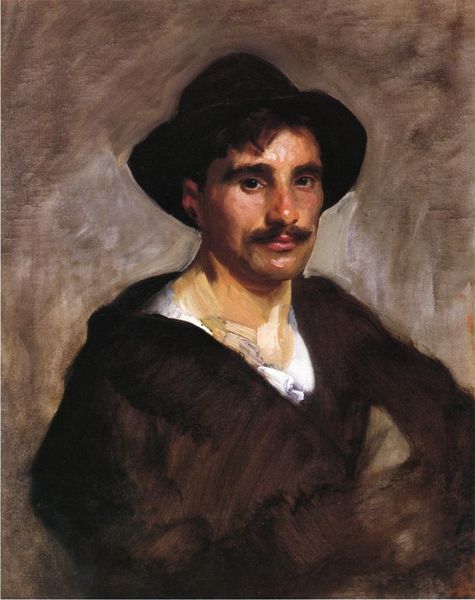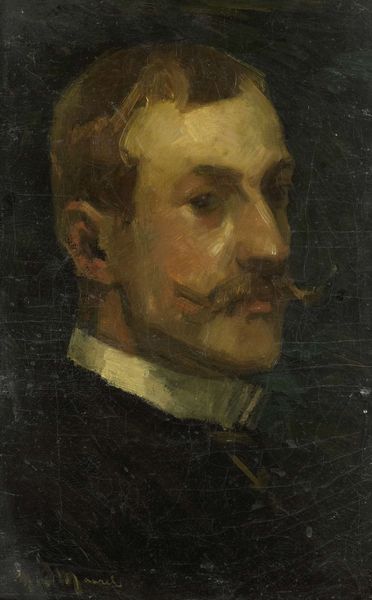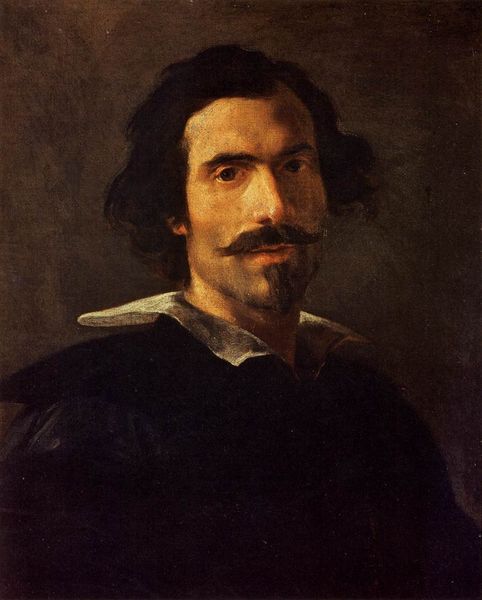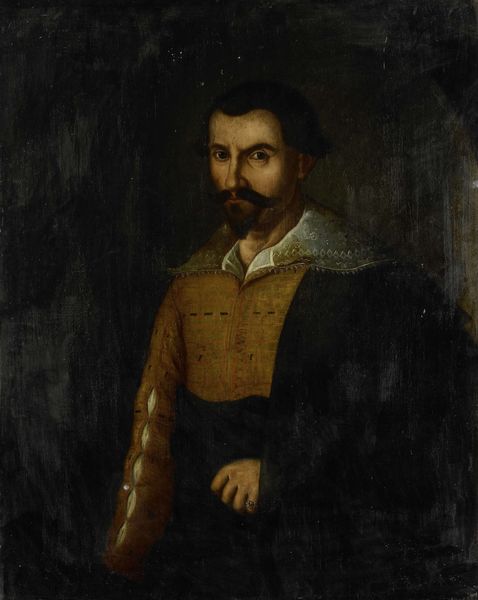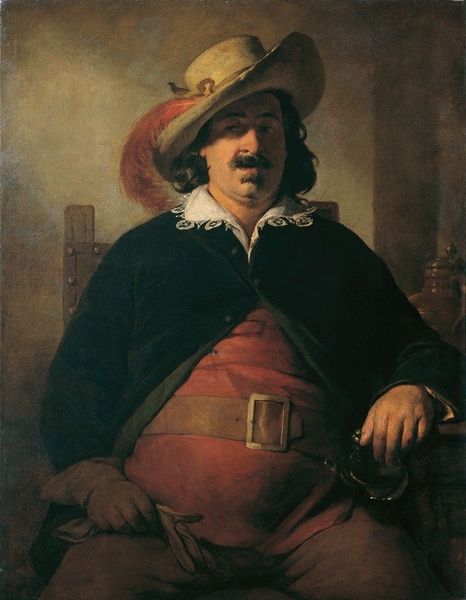
painting, oil-paint
#
portrait
#
painting
#
oil-paint
#
11_renaissance
#
history-painting
#
northern-renaissance
#
realism
Dimensions: 41.5 x 57 cm
Copyright: Public domain
Curator: Holbein’s "Portrait of Sir Nicholas Poyntz," executed around 1535, offers such an intriguing glimpse into the world of the Tudor elite. What do you see initially? Editor: The severe profile, starkly contrasted against that soft teal background, it speaks of ambition…and maybe just a touch of melancholy? The feather in his cap adds a flamboyant touch to an otherwise austere depiction. Curator: Flamboyant touches are telling of status, aren't they? This was painted during a turbulent time in English history, heavily influenced by the political landscape of the Reformation. Sir Nicholas was a courtier and MP known for his extravagant building projects, like Newark Park, signaling his importance but also tying him to shifting political winds. Editor: Exactly. How do these artworks actively shape the legacy and public persona of individuals, particularly during times of upheaval? The gaze directed away—almost avoiding the viewer—it plays with ideas of both power and vulnerability. Was it the norm, socially, for wealthy noblemen to parade so much wealth in portraiture, given Henry VIII’s ever-watchful eye? Curator: The politics of display were certainly complex. Holbein was known for his realistic style. Note the details on the clothing, but most especially the facial hair: these touches spoke to a sophisticated audience steeped in humanist ideals. It reflects a world grappling with new ideas and how power could be performed on canvas and communicated visually. Editor: True, this form of realism can also be analyzed in relation to modern concepts of representation. Does Holbein's portrait embody some proto-narrative of masculinity that can resonate with present issues of performativity, wealth display, and, even, class? The artist actively contributed to creating these enduring visual markers of societal rank. Curator: Absolutely. And through careful examination, we can start to unravel some of those intricate power structures in the period. These pieces aren't merely historical records; they're active agents in crafting identity and ideology. Editor: By considering the painting from diverse analytical approaches, what starts as a regal portrait begins to really illuminate the power dynamics intrinsic within the socio-political contexts of the time. Curator: A very nuanced observation that encapsulates so much, and shows us that such paintings are never truly mute objects.
Comments
No comments
Be the first to comment and join the conversation on the ultimate creative platform.
